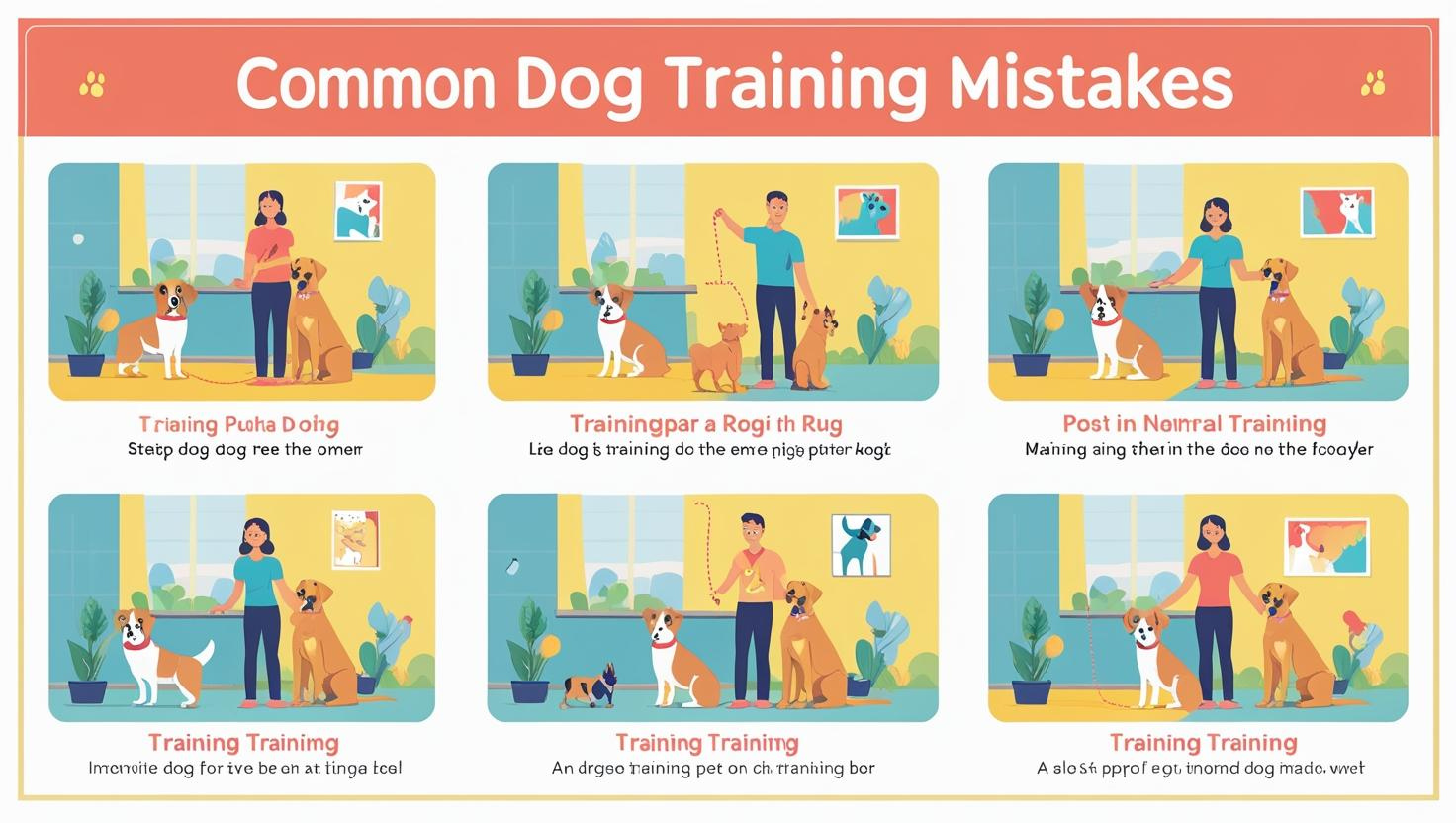Training your dog is one of the most rewarding investments you can make in your relationship. A well-trained dog is confident, calm, and a joy to be around. But even with the best intentions, many dog owners make mistakes that can slow down training or even create unwanted behaviors. In this article, we’ll explore common dog training mistakes and how to fix or avoid them altogether.
Mistake #1: Being Inconsistent
The Problem:
Inconsistent commands or routines confuse dogs. Saying “Down” one day and “Lay” the next for the same action doesn’t help them learn.
Solution:
Stick to the same words and gestures for each command. Ensure all family members use the same cues. Dogs thrive on routine and predictability.
Mistake #2: Using Negative Reinforcement
The Problem:
Yelling, scolding, or using punishment creates fear. It damages the bond between you and your dog and often leads to stress-based behaviors.
Solution:
Use positive reinforcement. Reward good behavior with treats, praise, or toys. Ignore or redirect undesirable behavior rather than punishing it.
Mistake #3: Expecting Results Too Quickly
The Problem:
Training is a process, not a one-time event. Getting frustrated or giving up after a few tries can lead to inconsistent results.
Solution:
Be patient. Break tasks into small steps and celebrate progress. Practice daily, and keep sessions short—5 to 10 minutes is ideal for most dogs.
Mistake #4: Repeating Commands Too Often
The Problem:
Saying “Sit, sit, sit…” teaches your dog to ignore the command until it’s repeated multiple times.
Solution:
Say the command once. If your dog doesn’t respond, help guide them into the position and reward. Avoid turning commands into background noise.
Mistake #5: Training in High-Distraction Environments Too Early
The Problem:
Trying to train your dog in a park or busy space from the start often leads to failure and frustration due to too many distractions.
Solution:
Start training in a quiet, low-distraction area (like your living room). Once your dog masters the behavior there, gradually increase the difficulty by moving to busier environments.
Mistake #6: Not Using High-Value Rewards
The Problem:
If your dog isn’t excited by the reward, they won’t be motivated to learn or obey.
Solution:
Use treats your dog LOVES during training—especially for new or difficult behaviors. Small bits of cheese, chicken, or store-bought training treats work well.
Mistake #7: Ending on a Negative Note
The Problem:
Stopping a session after a failure or scolding can leave your dog discouraged and reluctant to train again.
Solution:
Always end on a positive note. Even if the session was challenging, finish with an easy command your dog knows well (like “Sit”) and reward it.
Mistake #8: Skipping Mental and Physical Exercise
The Problem:
A bored or under-stimulated dog is less likely to focus during training and more likely to develop bad habits.
Solution:
Provide regular exercise and mental stimulation. A tired dog is a better student. Walks, fetch, puzzle toys, and socialization help keep their mind and body engaged.
Mistake #9: Failing to Practice Regularly
The Problem:
Training once a week won’t be enough to reinforce learning. Like any skill, dogs need repetition.
Solution:
Train briefly every day, even if just a few minutes. Use everyday moments (before meals, walks, or play) to reinforce commands.
Mistake #10: Ignoring Your Dog’s Signals
The Problem:
If your dog is stressed, fearful, or overwhelmed, forcing training can backfire.
Solution:
Watch for signs of stress—panting, yawning, avoiding eye contact, or trembling. If your dog is uncomfortable, pause and try again later with a gentler approach.
Bonus: Trying to Train When You’re Upset or Rushed
Dogs are sensitive to your energy. If you’re anxious or in a hurry, your dog will sense it and become uneasy too. Training in the wrong mindset leads to frustration for both of you.
Fix: Only train when you’re calm and have time. Make it a fun experience for both of you.
Mistakes Are Opportunities
Everyone makes mistakes, especially when learning something new. The important thing is recognizing them and making adjustments. Training your dog is a journey built on communication, consistency, and patience. By avoiding these common pitfalls, you’ll raise a well-behaved, confident, and happy dog.
